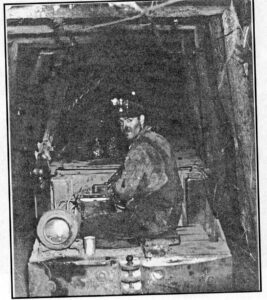What lies beneath?
9/6/2023
By 1893, records show Polk County was home to 23 coal mines with more than 500 men employed. Image provided by Darlene Oliver from her self-published book “The Shuler Coal Mine.”
I have written about coal mining in the metro previously with the Shuler Mines in Waukee. It’s surreal to think that Des Moines is littered with abandoned mines under the streets and our homes. What creatures could be living in those old caverns? Have you ever seen the movie “C.H.U.D.” (Cannibalistic Humanoid Underground Dwellers)? It involves mutant cannibals living under the streets of New York City deep in the sewers. It was a metaphor for how New York City was dealing with the homeless population. When I think about the caverns under Des Moines, I wonder if they have been undisturbed for nearly 100 years, or has something — or someone — found a home down there?
Soldiers who were stationed at Fort Des Moines around the 1840s were the first to mine coal near outcrop areas of the Des Moines River Valley. It was a slow-moving industry to get off the ground due to an abundant wood supply, unavailability of effective mining techniques, and transportation that was not advanced enough. It wasn’t until 25 years later with the establishment of the Des Moines Coal Company by Wesley Redhead in 1865 when coal mining became a commercial venture. Redhead opened a slope mine just north of the city, west of the Des Moines River. By 1893, records show Polk County was home to 23 coal mines with more than 500 men employed. Twenty of the mines supplied coal for the “shipping” market, which means these were large operations. Many of them centered around the Sevastopol settlement south of the city where the Des Moines and Raccoon rivers meet. This was home to the Pioneer and Eclipse mines.
Kenny Zika of Des Moines said that, around 1924-1926, when his dad would caddie at Wakonda Golf Course, he could feel the explosions from the mines under his feet. Paul Hickey, one of my favorite sources of obscure Des Moines facts, mentioned this story: “For the Atlas Coal Mine that was situated on Ashworth Road between the bowling alley and the Roto-Rooter building, the main shaft was located on that grassy strip between the buildings and north of West Bank. According to an old timer, the coal mine galleries flooded after they hit ground water. The galleries were throughout the area including under Valhigh Road and up toward Eighth Street.”

From 1905 to 1906, more than 7 million tons of coal were produced in Polk County, and nearly 3,000 people were employed. Image provided by Darlene Oliver from her self-published book “The Shuler Coal Mine.”
From 1905 to 1906, more than 7 million tons of coal were produced in Polk County, and nearly 3,000 people were employed. Those numbers went downhill with World War I and II. Out-of-state markets were now beating the Polk County companies, and labor shortages were caused due to our boys going off to war. Throw in the development of nuclear power, hydroelectric, and other alternative energy sources, and an entire industry was choked out. A total of 222 coal mines operated in the Des Moines area during those heavy years. Many of the mines were decommissioned, filled in, or just simply abandoned. Others have not been located. An Iowa DNR commissioned report from 1989 mentioned that 62 mines had not been found. In 2016, it was determined that an abandoned mine was likely the cause of a giant sinkhole on the southside of Des Moines. Calvin Wolter, a geographic information systems analyst with the Iowa Department of Natural Resources, was quoted in a Des Moines Register article dated April 13, 2016, saying, “If you’re in the Des Moines area, there’s a good chance there’s a coal mine beneath you.”
These coal mines are not just Des Moines and Polk County. Nearly 6,000 mines are estimated to be located in central Iowa, according to an Iowa geological survey. Much of the Iowa landscape has been re-shaped due to all these tunnels under the ground. If you think about it, if the mines were just abandoned, the only things holding up that rock are wooden pillars with potentially a few thousand pounds of concrete and motor vehicles pressing down on them. Eventually, they will give out.
Enjoy that thought while you are trying to fall asleep tonight. Oh, and the C.H.U.D.s, too. Don’t forget about them. ♦
Kristian Day is a filmmaker and writer based in Des Moines. He also hosts the syndicated Iowa Basement Tapes radio program on 98.9 FM KFMG. Instagram: @kristianday Twitter: @kristianmday


















